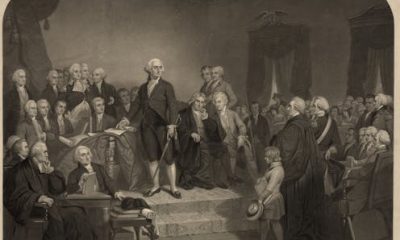
Congress faces yet another potential shutdown. AP Photo/Andrew Harnik
When the U.S. government shuts down, the immediate and most visible impact is a rupture in its day-to-day operations.
For example, many national museums and parks are closed, immigration hearings are postponed and the Food and Drug Administration isn’t doing routine inspections of domestic food-processing facilities.
But beyond these functions and the individual workers and families affected, could a short or lengthy shutdown affect the broader U.S. economy as well?
Constantine Yannelis, a professor at the University of Chicago, and I examined data from the 2013 government shutdown to better understand its impact.
An economic speed bump
A primary channel through which a shutdown affects the economy is through withheld or forgone pay from federal employees who don’t receive their paychecks.
Since consumer spending makes up about 70% of economic activity in the United States, withholding pay from even some of the 2 million or so government workers could introduce a significant economic speed bump in the short run.
And that’s exactly what we saw in October 2013, when a partisan standoff in Congress led to a partial shutdown of the government that lasted a little over two weeks.
Well over 1 million federal employees were affected and didn’t receive a paycheck during the shutdown. Some were furloughed – sent home and told not to do anything related to their job. Those deemed “essential” or “exempted” – such as security personnel screening passengers at airports or border patrol agents – were required to continue working at their jobs, although they were not receiving paychecks. The government eventually paid both groups the money owed them, regardless of whether they worked, after Democrats and Republicans reached an agreement on Oct. 16, 2013.
My colleague and I sought to understand how households responded by tracking how they behaved in the days leading up to, during and following the shutdown using detailed financial data.
We obtained this anonymized data from a personal finance website where people track their income, expenses, savings and debt. Using the paycheck transaction descriptions, we identified over 60,000 households that contained employees of federal agencies affected by the shutdown. These affected employees included both those who were asked to work without pay and those who were furloughed.
As a comparison group, we also identified over 90,000 households with a member who worked for a state government. That would likely mean they have fairly similar levels of education, experience and financial security, yet their paychecks were unaffected by the shutdown.
Short-term impact on spending
Our study led to two primary findings.
First, we found that the shutdown led to an immediate decline in average household spending of almost 10%. Surprisingly, despite the fact that most federal workers have stable jobs and income sources, they were quick to cut spending on pretty much everything, from restaurants to clothing to electronics, just days after their pay was delayed.
While households with less money in the bank cut their spending by larger amounts, even those with significant resources and easy access to credit reduced their expenditures.
Second, households with a member who was furloughed and required to stay home from work slashed their spending more dramatically – by 15% to 20%, or almost twice as much as the average of those affected. This larger decline reflected the fact that these households suddenly had a lot more time on their hands. Rather than going out to eat or paying for child care, for example, they could spend more time, say, cooking or watching their own children.
These types of behavioral changes are what help spread the economic effects of a shutdown from the slice of the population that’s immediately affected to a wider group of businesses and individuals in Washington, D.C. And in regions with substantial numbers of federal workers, these declines in spending can greatly hurt the health of the local economy in the short run.
Long-term impact?
Whether or not a shutdown has a longer-term economic impact depends on whether employees are paid their forgone wages after its conclusion – and how long the shutdown lasts.
In 2013, the government repaid even furloughed workers what they would have earned had the shutdown not happened.
This repayment, essentially increasing the size of their first post-shutdown paychecks, had significant and immediate effects on household spending. A sudden spike in spending occurred in the days after the paychecks were disbursed, largely erasing some of the most dramatic declines in spending during the previous two weeks.
The government has usually paid all its employees, “essential” or not, back pay after other shutdowns, such as those in the 1990s. While Congress is legally required to pay federal employees who worked during the shutdown, there’s no law requiring the same treatment for nonessential workers.
In addition, the longer the shutdown lasts, the worse its impact. Households might deplete savings or hit their credit card limits as the impasse stretches day after day, giving them additional time to adjust their spending in ways that they could not do with only a few days’ notice. For instance, in 2013, bills for health insurance or tuition payments were largely unaffected. Had that shutdown persisted, households may have started to cut back here as well.
So if Congress refuses to offer furloughed workers back pay, or the shutdown lasts months rather than weeks, the economic impact could be severe.
However, if a shutdown is resolved in a relatively short amount of time, with workers being paid back their regular income, the damage would likely be fairly contained.
This is an updated version of an article originally published on Jan. 19, 2018.
Scott R. Baker does not work for, consult, own shares in or receive funding from any company or organization that would benefit from this article, and has disclosed no relevant affiliations beyond their academic appointment.
Advertisement

Advertisement
Contact Us
If you would like to place dofollow backlinks in our website or paid content reach out to info@qhubonews.com











